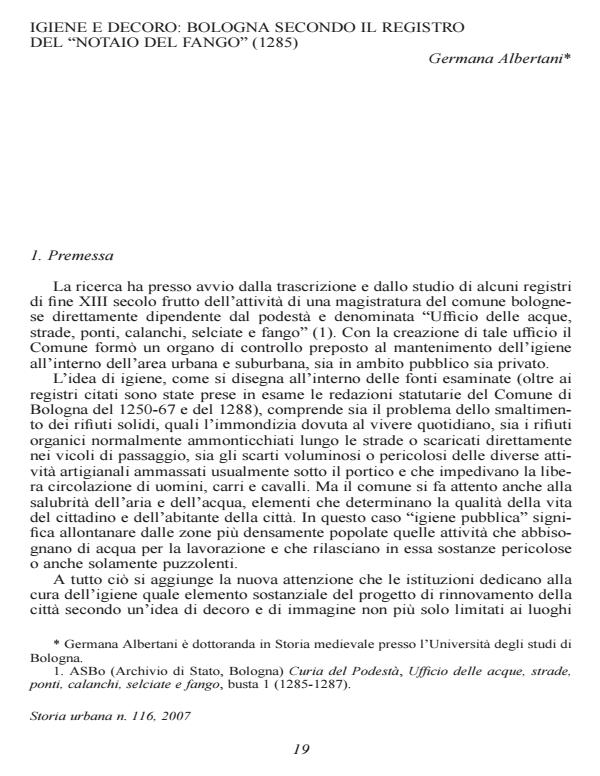Igiene e decoro: Bologna secondo il registro del "Notaio del fango" (1285)
Journal title STORIA URBANA
Author/s Germana Albertani
Publishing Year 2007 Issue 2007/116 Language Italian
Pages 18 P. 19-36 File size 2328 KB
DOI
DOI is like a bar code for intellectual property: to have more infomation
click here
Below, you can see the article first page
If you want to buy this article in PDF format, you can do it, following the instructions to buy download credits

FrancoAngeli is member of Publishers International Linking Association, Inc (PILA), a not-for-profit association which run the CrossRef service enabling links to and from online scholarly content.
In the thirteenth century many Italian cities enacted laws on town planning resulting in wide ranging and effective building construction efforts, aesthetical improvements in town texture and significant water works projects in order to supply with clean water every neighbourhood, in sufficient quantity to ensure the cleanliness and hygiene of streets and public areas. The political measures taken and regulations enacted by the municipality included the setting up of new highly specialized magistrate’s courts to monitor enforcement and to act promptly and autonomously for the solution of day-to-day problems, both simple and complex Hence the institution of the “mud notary”, a magistrate established in Bologna circa 1260.
Germana Albertani, Igiene e decoro: Bologna secondo il registro del "Notaio del fango" (1285) in "STORIA URBANA " 116/2007, pp 19-36, DOI: